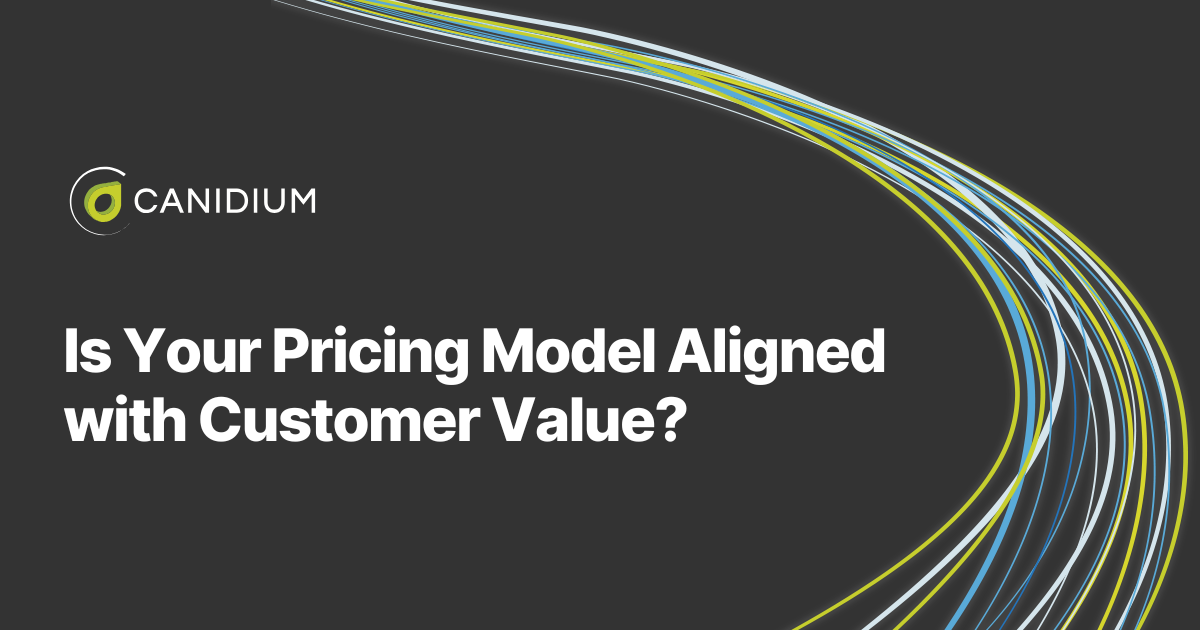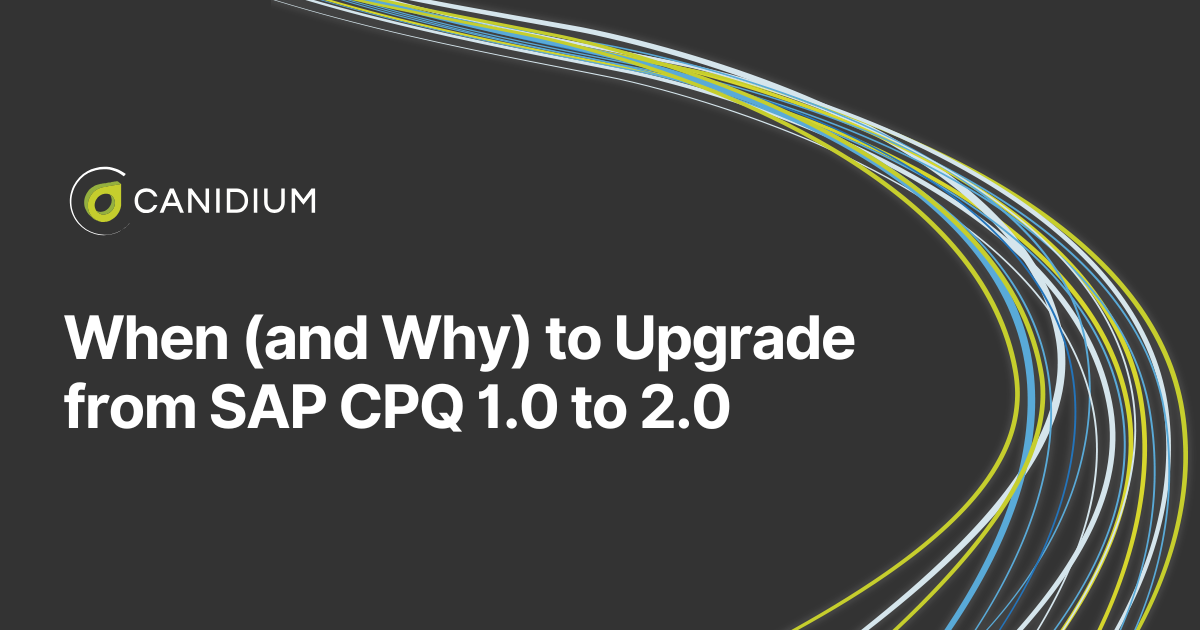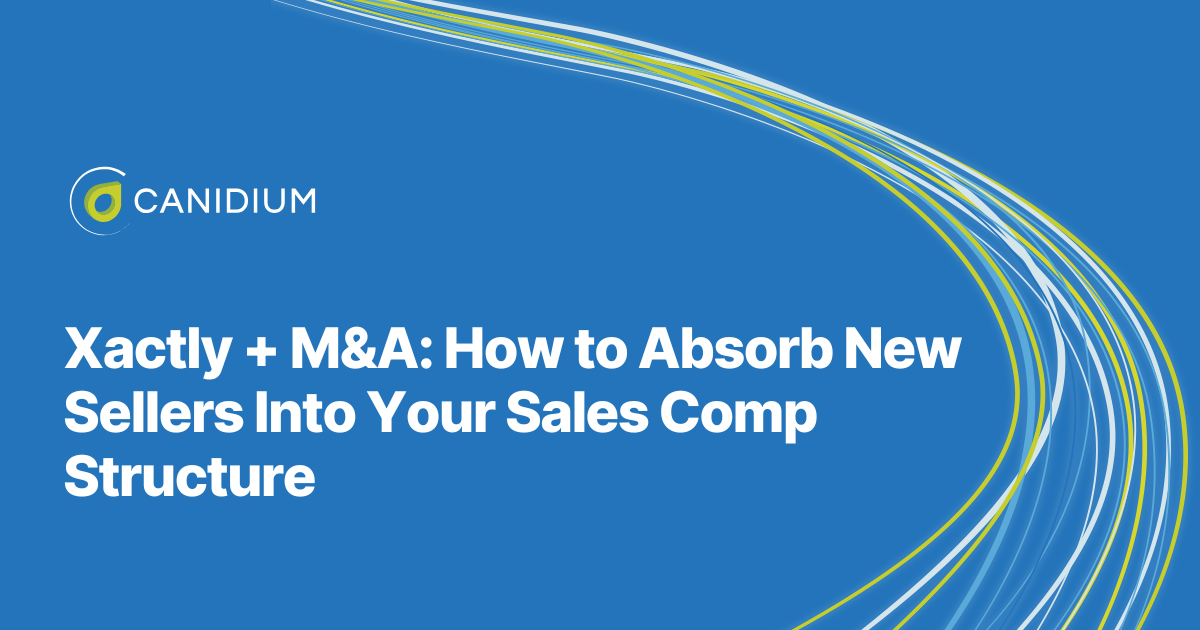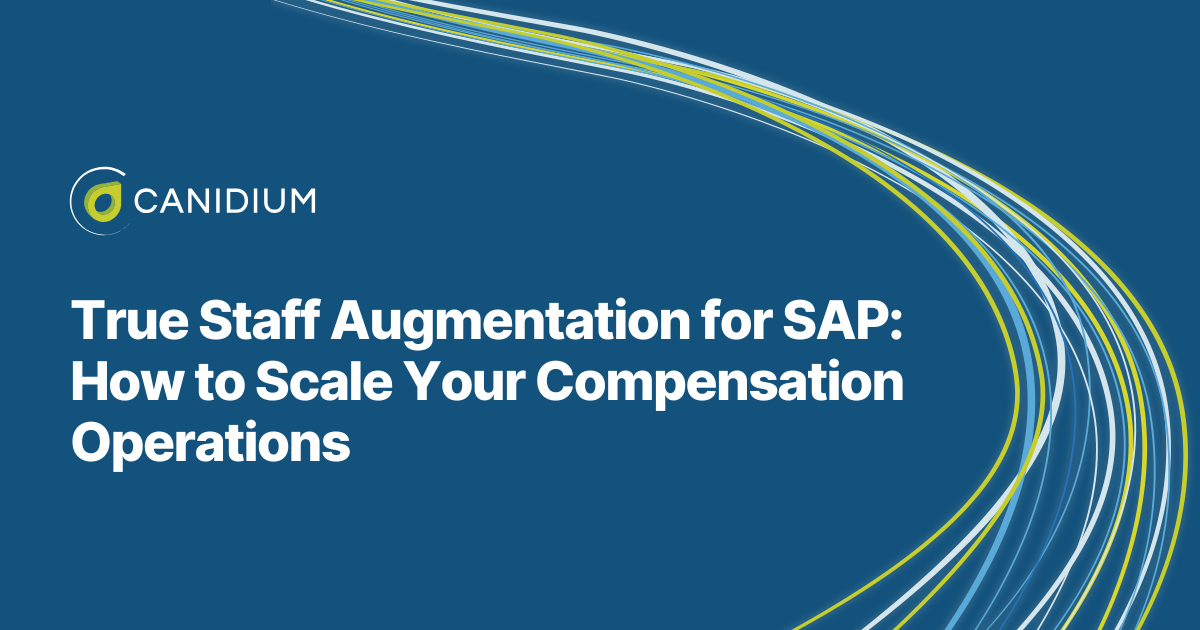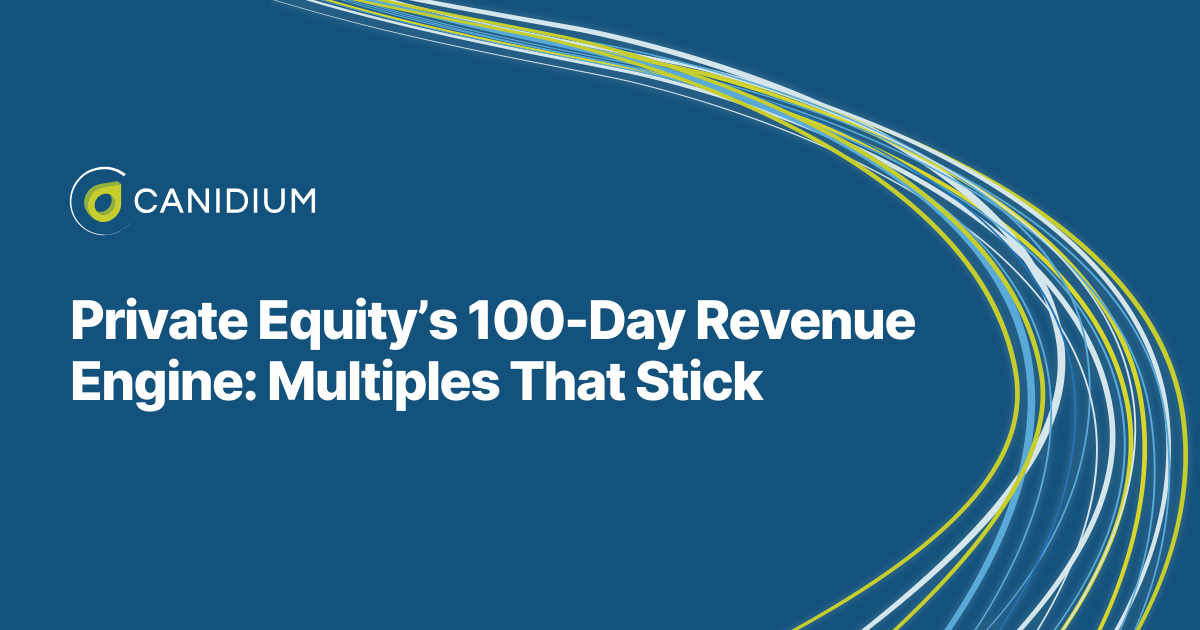Pricing models are the fastest levers you control, and small improvements compound. Decades of analysis on pricing strategies show that a 1% improvement in price increases operating profit by roughly 8.7% (assuming stable volume). That single statistic should reframe competitive pricing reviews from a periodic housekeeping task to an operating discipline you manage every week.
Yet despite the massive revenue stream advantage that optimized pricing models can generate, many organizations still choose to leave this money on the table. Across industries, “planned” changes in pricing strategies often get diluted by discounts, rebates, and exceptions until the realized move is just a fraction of what leaders intended. Research price realization rates are achieving less than 50% of their targets in practice, a gap large enough to erase entire growth plans if left unmanaged.
Customers, for their part, signal that they will pay for what they value: in PwC’s global study, 43% of consumers said they would pay more for convenience, and 42% would pay more for a friendly, welcoming customer experience, evidence that value is broader than features and performance alone.
The summation of these three statistics tells us three things: optimal pricing strategies are well worth the effort, yet many pricing decisions fall short of their targets, and finally, customer behavior can accommodate pricing increases if the value is there. So, based on these facts, this guide covers what “customer value” actually means, including how to pick a value metric, package it, operationalize it in systems, and teach it to the field—so your pricing model becomes a trustworthy reflection of the outcomes you deliver.
What a “pricing model” really is (and why misalignment with customer needs and market trends hides upstream)
When teams say “we need a new pricing model or strategy,” they often jump to the number on the rate card. In reality, pricing lives in four nested layers that cascade to that number.
- First is the monetization model, the way customers pay—subscription pricing, usage-based pricing, flat-rate pricing, two-part tariffs, performance fees, or transactional charges.
- Second is the value metric, the unit that scales with outcomes—seats, transactions, assets, capacity, devices, or even results such as uptime or defects avoided.
- Third is the architecture, the structure that fences and expresses value—tiered pricing models such as premium pricing and freemium pricing, bundle pricing, add-ons, commitments, and price floors with guardrails.
- Fourth is the level, the actual figures: list, target, and floor, plus rebates or incentives.
Most misalignment originates in the first two layers (model and metric). If you meter the wrong thing, no discount policy can save you; the economics will feel off in terms of product value to both buyer and seller.
“Customer value” pricing models in plain terms
Value is the measurable improvement a customer gets versus their next-best alternative. In B2B, it shows up as revenue lift, cost reduction, risk mitigation, capital efficiency, and speed. In consumer and prosumer contexts, it shows up as time saved, reduced friction, assurance, access, and even identity.
A useful way to formalize the conversation is Economic Value to the Customer (EVC): identify a credible alternative, quantify the differential benefits over a relevant horizon, net out adoption and switching costs, and anchor your offer to a fair share of that differential. The more your meter mirrors the driver of that differential, the easier the pricing conversation becomes, and the simpler customer acquisition and retention will be.
How to sense misalignment with market conditions before it shows up on the P&L
Misalignment tends to announce itself in familiar ways. If discounts feel like the only way to win over your customer base and subscription pricing renewals are tense, the value story probably isn’t tied tightly enough to the metric you charge on. If “power users” seem unprofitable while “light users” balk at your lowest price, the meter likely isn’t proportional to value.
If the attach rates for premium features are flat despite strong NPS, the packaging of your pricing model isn’t expressing value coherently. And if your price waterfalls show leakage at every step—promotions, freight, payment terms, rework—architecture and governance are not protecting value at the transaction level. Each symptom points upstream to the model, metric, or both.
Selecting a value metric that actually tracks outcomes
The best metric scales with the outcome befitting customer expectations, while being easy to understand and measure reliably in your systems. SaaS company platforms often succeed with usage events (API calls, credits) or capacity units (compute, storage), but should default to per-seat only when seats truly track value.
Data and analytics products often meter queries or rows processed, then separate rights or latency as premium pricing add-ons. Industrial and services businesses do well with units processed, uptime achieved, or defects avoided, and sometimes with guarantees that tie price to performance. In regulated or outcomes-based categories, prices can include risk-sharing components that adjust when outcomes vary. When in doubt, map the two or three economic drivers of value for your customer, test which correlates most with willingness to pay, and design your pricing models around that.
EVC, but practical: from value model to pricing strategies structure in five steps
A pragmatic EVC workflow has five steps.
- First, choose the alternative that a rational buyer would use—competitor, internal tool, manual process, or doing nothing.
- Second, quantify differentials in the customer’s economics: full-time equivalents saved, throughput gained, scrap avoided, conversion lift, working-capital acceleration, risk reduction.
- Third, subtract your fees, change costs, and residual risks to get net value.
- Fourth, select a fair share of that net value for your capture, with lower shares for early-stage or unproven offers and higher shares for proven, high-impact categories.
- Fifth, translate the model into a structure customers can plan around—often a two-part tariff (a predictable base + a usage component that scales with outcomes) plus sensible caps, floors, or true-ups to de-risk budgeting.
Once this framework is in place, the price discussion is your value discussion, rather than a debate over line items.
Packaging that expresses value without encouraging pricing model workarounds
Packaging is where EVC meets reality. Good/Better/Best tiers work when each step unlocks broader or deeper outcomes rather than a grab bag of features. Add-ons belong where willingness to pay is heterogeneous but the base should still remain clear and stable.
Two-part tariffs balance predictability with alignment by fixing a base for access and letting price scale with usage or outcomes. Pricing strategies like commitment options, term length, and prepayment can lower the effective price responsibly, as long as you keep the fences explainable and enforceable. The aim is not to maximize short-term ARPU but to keep price proportional to realized value over time, thus allowing you to increase your gross margin while keeping your customer churn rate low, sustaining a positive brand perception, shortening the sales cycle, successfully navigating a difficult market environment, and maintaining your market share.
Governance: the invisible half of value-based pricing models
Too many programs end with a refreshed price book and a kickoff call. The leaders operationalize pricing the same way they operationalize pipeline: cadence, accountability, and visible instrumentation. They use “give-get” rules so concessions have a cost and are traded for value (longer terms, references, prepayment, volume). They score deals so exceptions trigger rationale and approval, and they review the price waterfall monthly to find the two or three steps where leakage is re-emerging.
This rigor is not bureaucracy—it’s how you ensure the price customers pay continues to reflect the value they receive. It is also how you close the chronic gap between planned and realized pricing that market data sources show.
Research methods that surface willingness to pay—without boiling the ocean
Pricing market research works best when it blends qualitative discovery, light behavioral tests, and targeted quantification. Start with value mapping conversations in which customers define success in their language and quantify a few representative outcomes using their financials. Layer in behavioral tests, pilot a usage-based plan with a bounded cohort, A/B a packaging change on your pricing page, or shadow price an outcome rider within your CPQ to observe choices at the margin.
Use quant methods when the stakes justify it: Van Westendorp and Gabor-Granger for basic ranges, discrete choice or conjoint when you need to untangle feature-price trade-offs, and EVC models that the account team can personalize with customer data. Most importantly, instrument the outcomes you claim—defects avoided, uptime achieved, cash-collection acceleration—so you can show the value realized at QBRs and renewals.
Sales enablement: teach the value story of your pricing model, not a rate card
If your field teams can’t connect the value-based pricing structure to the customer’s economics, they will default to discounting. Equip them with ROI narratives and calculators that mirror your EVC framework and are editable with the customer’s numbers. Provide reference-alternative frames—competitor, internal build, or status quo—so the buyer sees the market pricing or reference price your competitive pricing works against. Choreograph negotiations with a small set of reversible concessions (terms, references, commitments) and a few non-negotiables (floors, outcome definitions). To the buyer, this experience itself increases customer satisfaction.
Make your pricing model real in your systems—or it won’t stick
Many value-based initiatives falter not in design but in execution. Align your product and pricing data model so the catalog cleanly represents meters, attributes, tiers, add-ons, and fences (e.g., Salesforce Revenue Cloud/RLM catalogs, Pricefx parameters, SAP price conditions). Embed floors, targets, approvals, and give-get logic directly in CPQ or deal-desk workflows, so rules are enforced without heroics. Ensure your rating and metering can ingest usage and outcome telemetry in near-real time and feed billing accurately, with customer-visible dashboards so buyers can forecast spend and verify the value of your pricing model.
Finally, join quotes, usage, costs, and outcomes in your analytics layer so you can track price realization and value delivery by segment, cohort, and product—then adjust quarterly as the market pricing moves or customer demand shifts.
Three brief scenarios
Consider a SaaS workflow platform that historically charged per seat but discovered that the economic impact scaled with transactions processed. Reframing pricing as a two-part tariff—a stable platform fee plus usage credits tied to transactions—kept budgets predictable while letting price track value as adoption grew. Expansion and net revenue retention followed because customers felt the meter was fair.
In industrial services, customers say they buy maintenance hours, but they actually value uptime. A shift from hourly billing to a retainer with uptime guarantees, outcome credits, and clear environmental fences moves the conversation from rate to results. Deal friction falls because buyers and sellers now optimize the same variable.
In distribution, blanket discounts quietly erode margins. Re-architecting fences by segment, commitment, and payment terms—and embedding them in CPQ—reduces leakage in the price waterfall and stabilizes pocket margin without hurting win rates, because differences in price are now explainable and auditable.
Why alignment compounds
When pricing strategies reliably track value, every transaction carries a little more truth. Sellers stop leading with margin-reducing pricing tactics like discounts and start leading with outcomes. Your finance team gets predictability. Customers get fairness, value-based pricing, and market pricing transparency. Over time, those effects compound to expand your market share and potentially increase the lifetime value of each customer.
That is the essence of pricing power, and it is within reach if you treat pricing as a system, not a one-off project. The math helps: improving your pricing strategies is one of the most powerful profit levers available to management.
The technical implementation of your pricing model
Canidium focuses on the detailed and highly technical work of turning value logic into a quote-to-cash reality. Regardless of where you are on your pricing journey, we specialize in establishing the rules and infrastructure you need to increase your monthly recurring revenue and pad your gross margin. Our experts wire your pricing strategies and models into your stack—Salesforce CPQ/RLM, Pricefx, SAP pricing, billing, and the surrounding metering and analytics—so floors, fences, and give-gets are enforced automatically, not negotiated ad hoc. Finally, we help you stand up a pricing cadence with dashboards that monitor realization, deal quality, and value delivery quarter after quarter. The result is a value pricing model that not only withstands market shifts but also increases customer retention, offers sellers better pricing strategies to expand volume, and expands revenue with dynamic pricing capabilities.


